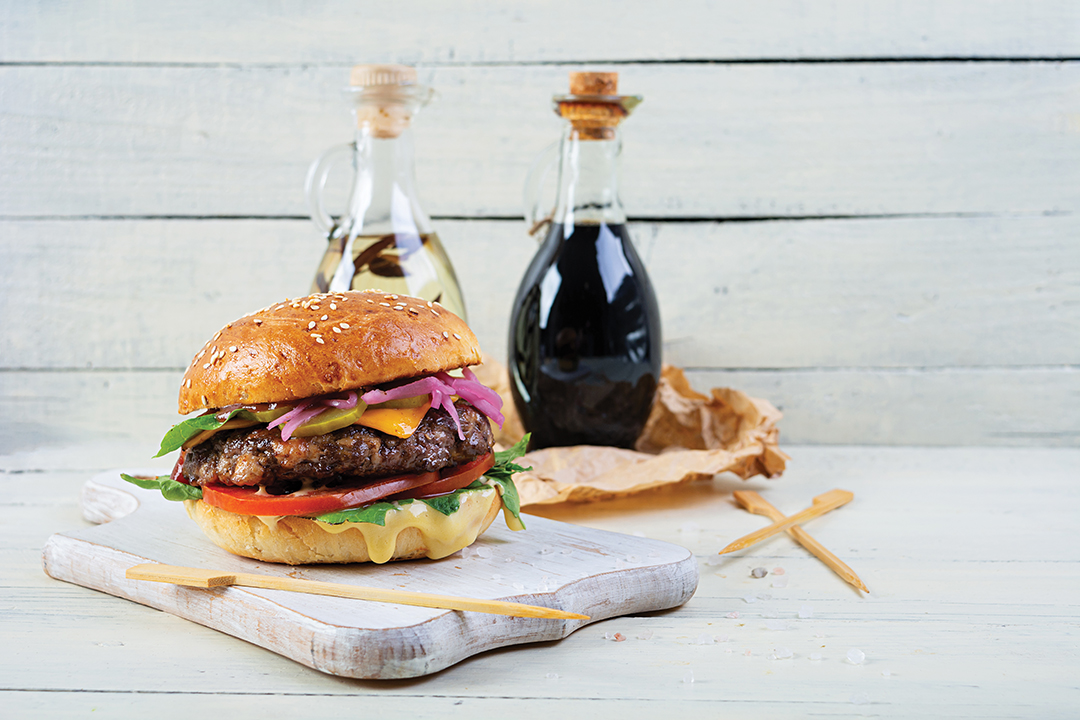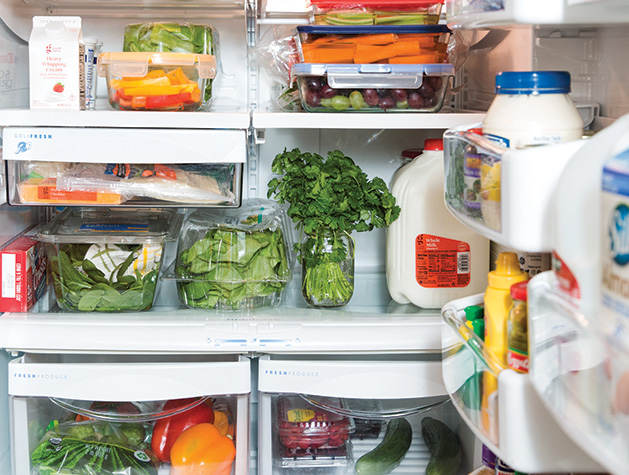
Photos: Rachel Nadeau
Full Fridge Friday includes menu planning, grocery shopping and meal prepping for the week ahead—all on Thursday and Friday.
Nicole Pierson wanted to flip the narrative when it came to meal planning and grocery shopping, so the former educator launched an Instagram microblog to offer readers and followers tips to make life healthier, easier and more cost effective.
“I have heard so many of my friends and acquaintances say that they can never have a clean house, save money, live debt free or cook homemade meals for their family,” Pierson says. “It has almost become the norm for moms with young families to be constantly frazzled. I deeply believe that life, even with a young busy family, does not have to be so chaotic.”
This metro area wife and mother of two has put her words into action with her version of Full Fridge Friday, which includes menu planning, grocery shopping and meal prepping for the week ahead—all on Thursday and Friday. “I was finding myself spending hours on Sunday [doing all those tasks],” she says. “I wanted my weekends back for family time and knew there had to be a better way. On a whim, I decided to move my whole process to Thursday and Friday for the week ahead, and it was a great success. I have received great feedback that this is working for others, as well.”
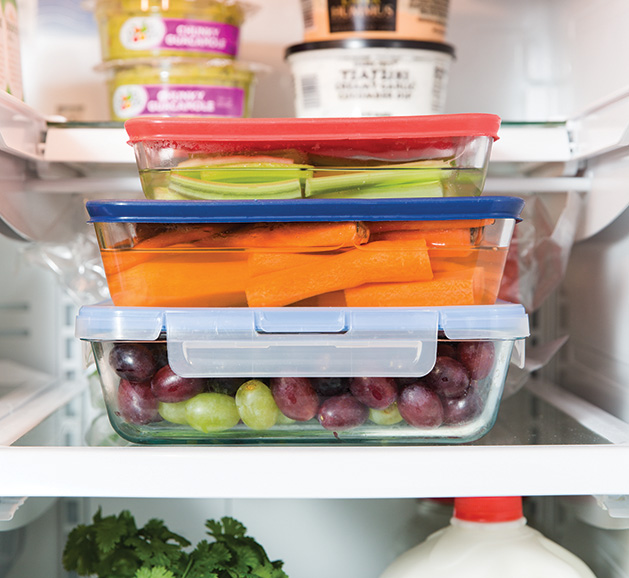
Pierson relishes the upside of the plan. “Implementing Full Fridge Friday has deeply benefited our family,” she says. “If it’s on our meal plan, I know I’ll have the ingredients ready to go in the fridge. This eliminates the conversation of, ‘What’s for dinner?’” With a plan in place, the family also avoids unplanned dinners out, which helps the family budget.
Eliminating excessive food waste is also an important benefit. “Our food waste is nearly zero at this point,” Pierson says. “If I do have any remaining produce from the previous week, I make sure to incorporate it into my meals for the upcoming week.” She admits to previously tossing out a fair amount of food. “We would have good intentions to eat produce or meat, but it would be forgotten and, eventually, thrown away. Now, I can’t remember the last time we threw away an unforgotten ingredient,” Pierson says.
Another advantage includes ridding the need to hit up the grocery store more than once a week. “It wasn’t uncommon for us to go to the grocery store two or three times a week,” Pierson says. “Now that we have a plan, we stick to once a week.”
Planning also equates to more intentional food consumption. “Preparing (washing and chopping) fruit and vegetables on Fridays means there is always a heathy snack or meal component to grab from the refrigerator,” Pierson says. “We’ve eliminated the friction of, ‘Oh, I’d like some carrots, [I] but don’t want to peel and cut them, so I’ll grab chips instead.’”
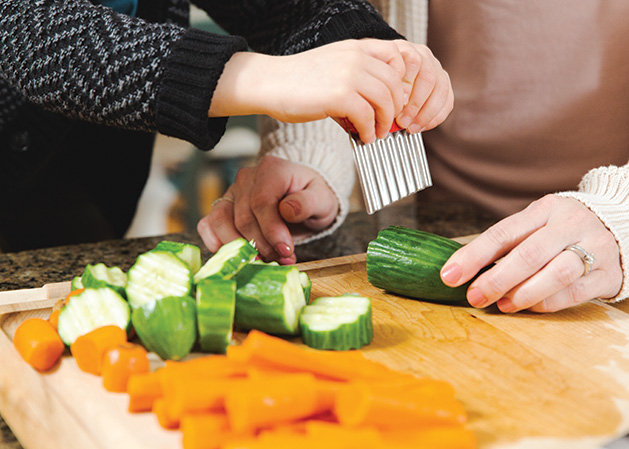
Pierson’s Pro Tips
Use What you Have: “Before meal planning, I look in the refrigerator and pantry with the goal of letting nothing go to waste. I use the remaining ingredients in our fridge and pantry as a base for our meal plan the following week. This is the reason we achieve zero food waste nearly every week. It’s also budget friendly to use up what you have on hand first.”
Check the Calendar: “If you have an activity night, plan for a quick and easy meal. Check on days that you may already know you’ll be eating out. That way you won’t be buying food that won’t get eaten.”
Don’t Assign Meals: “I write out five meals that I will make throughout the week. [Each day], I decide what to make based on our schedule. That way, I don’t feel tied down to making a more labor-intensive meal when we get home 15 minutes before dinnertime, and I have two needy children calling my name.” (Decide how many meals works for your family. Maybe it works better to cook three meals a week and have leftovers more often.)
Focus on One Dish: “I typically focus on planning the main dish for dinner. I’m not too picky about side dishes. We always have fresh fruit and vegetables, along with frozen vegetables to use as sides.”
Prepping is Key: “In the past, when I would cook something, I would chop the veggies needed for the recipe as I cooked … It made cooking seem to take a long time and feel stressful. Now, the day that I grocery shop, I carve out time to component prep. If fajitas are on our menu, I’ll slice up bell peppers right away, so they’re completely ready to go when it’s time to cook. Does a recipe call for sliced chicken? I slice it after coming home from the grocery store. I wash most of our snacking and side dish fruits and vegetables immediately, so we always have fresh produce ready to eat.”
Plan for Produce: “Plan to eat the produce that goes bad the quickest first. For example, if we buy raspberries, we make sure to eat them within a couple of days. Grapes, on the other hand, can last a bit longer in the refrigerator. If I buy a rotisserie chicken, we plan to eat or freeze the meat right away.”
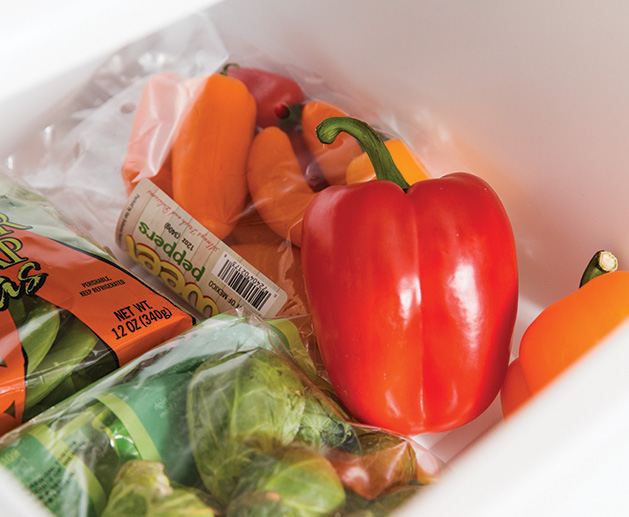
Stick to the Plan: “I cook five nights a week. (We eat out once a week and have leftovers or something simple once a week.) If it’s on our meal plan, I know I’ll have the ingredients ready to go in the fridge.
Waste Not
Let’s start with the numbers. According to the U.S. Department of Agriculture (USDA), it’s estimated that between 30-40 percent of the food supply ends up as food waste from retail and consumer levels. This translates into 133 billion pounds and $161 billion worth of food in 2010.
“This amount of waste has far-reaching impacts on society,” the USDA website notes. “Wholesome food that could have helped feed families in need is sent to landfills. Land, water, labor, energy and other inputs are used in producing, processing, transporting, preparing, storing, and disposing of discarded food.”
Does the fault for food waste rest solely on the shoulders of Americans tossing out too much uneaten or rotten food from their cupboards, pantries and refrigerators? Certainly not. The USDA explains that “… Food loss occurs for many reasons, with some types of loss—such as spoilage—occurring at every stage of the production and supply chain. Between the farm gate and retail stages, food loss can arise from problems during drying, milling, transporting, or processing that expose food to damage by insects, rodents, birds, molds, and bacteria.”
The USDA further notes, “At the retail level, equipment malfunction (such as faulty cold storage), over-ordering, and culling of blemished produce can result in food loss. Consumers also contribute to food loss when they buy or cook more than they need and choose to throw out the extras.”
The USDA and the Environmental Protection Agency in 2016 launched U.S. Food Loss and Waste Champions, encouraging businesses and organizations to commit to reducing food loss and waste in the U.S. by 50 percent by 2030.











